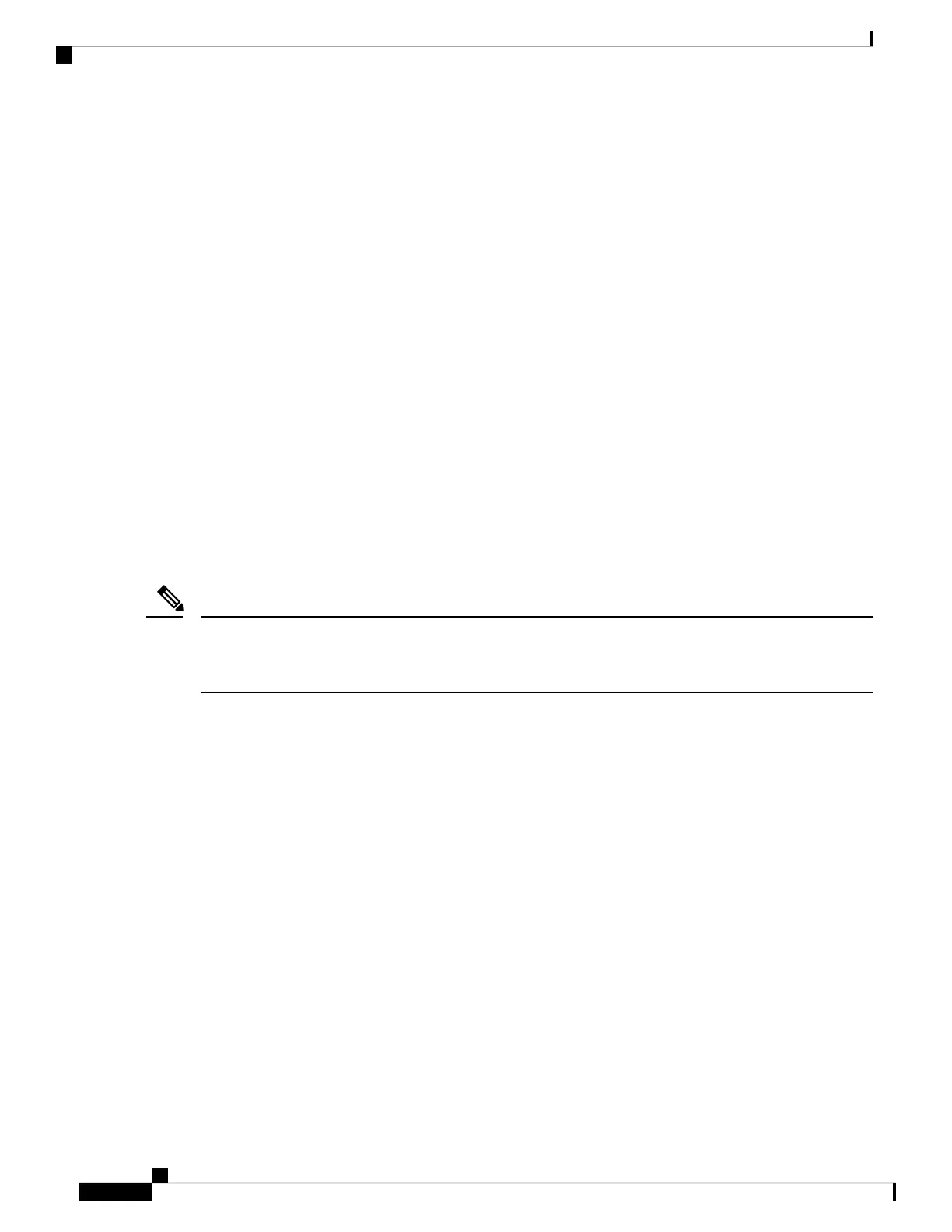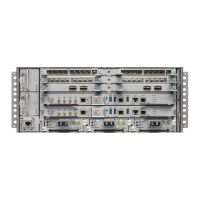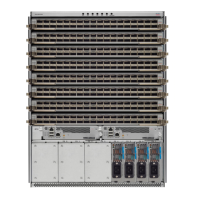This counter is incremented each time the system sends an echo packet, and is reset to zero whenever any
echo packet is received, regardless of the order that the packet was sent in the echo packet stream.
Under ideal conditions, this means that BFD generally detects echo failures that exceed the period of time (I
x M) or (I x M x M) for bundle interfaces, where:
• I—Value of the minimum interval (bfd minimum-interval for non-bundle interfaces, and bfd
address-family ipv4 minimum-interval for bundle interfaces).
• M—Value of the multiplier (bfd multiplier for non-bundle interfaces, and bfd address-family ipv4
multiplier for bundle interfaces) commands.
So, if the system transmits one additional echo packet beyond the multiplier count without receipt of any echo
packets, echo failure is detected and the neighbor is declared down (See Example 2).
However, this standard echo failure detection does not address latency between transmission and receipt of
any specific echo packet, which can build beyond (I x M) over the course of the BFD session. In this case,
BFD will not declare a neighbor down as long as any echo packet continues to be received within the multiplier
window and resets the counter to zero. You can configure BFD to measure this latency for non-bundle
interfaces. For more information, see Example 3 and the Echo Packet Latency.
Echo Failure Detection Examples
This section provides examples of several scenarios of standard echo packet processing and failure detection
without configuration of latency detection for non-bundle interfaces. In these examples, consider an interval
of 50 ms and a multiplier of 3.
The same interval and multiplier counter scheme for echo failure detection is used for bundle interfaces, but
the values are determined by the bfd address-family ipv4 multiplier and bfd address-family ipv4
minimum-interval commands, and use a window of (I x M x M) to detect absence of receipt of echo packets.
Note
Example 1
The following example shows an ideal case where each echo packet is returned before the next echo is
transmitted. In this case, the counter increments to 1 and is returned to 0 before the next echo is sent and no
echo failure occurs. As long as the roundtip delay for echo packets in the session is less than the minimum
interval, this scenario occurs:
Time (T): Echo#1 TX (count = 1)
T + 1 ms: Echo#1 RX (count = 0)
T + 50 ms: Echo#2 TX (count = 1)
T + 51 ms: Echo#2 RX (count = 0)
T + 100 ms: Echo#3 TX (count = 1)
T + 101 ms: Echo#3 RX (count = 0)
T + 150 ms: Echo#4 TX (count = 1)
T + 151 ms: Echo#4 RX (count = 0)
Example 2
The following example shows the absence in return of any echo packets. After the transmission of the fourth
echo packet, the counter exceeds the multiplier value of 3 and echo failure is detected. In this case, echo failure
detection occurs at the 150 ms (I x M) window:
Routing Configuration Guide for Cisco NCS 6000 Series Routers, IOS XR Release 6.4.x
132
Implementing BFD
Echo Failure Detection Examples

